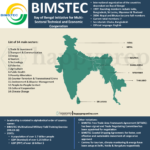Vice-President of India
Vice-President of India
Introduction
The Vice-President of India occupies the Second highest office in the country, only after the President of India. The Vice-President also plays an important role in the proper functioning of the government. Let’s cover the various aspects of this constitutional post in detail.
Constitutional Provisions Related to Vice-President of India
- Article 63: The Vice-President of India
- Article 64: Vice-President to be ex-officio Chairman of the Rajya Sabha.
- Article 65: Vice-President to act as President during vacancy or absence.
- Article 66: Election of the Vice-President.
- Article 67: Term of office of Vice-President.
- Article 68: Time of holding election to fill a vacancy in the Vice-President’s office.
- Article 69: Oath or affirmation by the Vice-President.
- Article 70: Discharge of President’s functions in other contingencies.
- Article 71: Matters related to the election of President or Vice-President (disputes, etc.)
Election of the Vice-President
Just like the President of India, the Vice-President is elected not directly by the people of India, but by the members of a electoral college consisting of the members (both elected and nominated) of both the Houses of Parliament
How is it different from the election to the President of India?
- The elected & nominated members of both the Houses of Parliament participate for election to Vice-President however only elected members participate for election to the President.
- the members of the state legislative assemblies do not participate in election to the Vice-President however they participate in election to the President.
- The manner of election is same for both the President and the Vice-President of India.
- The election of the Vice-President is held in accordance with the System of Proportional Representation by means of the Single Transferable Vote and the voting is by Secret Ballot.
- All doubts and disputes in connection with the election of the Vice-President are inquired into and decided by the Supreme Court whose decision is final.
- The election of a person as Vice-President cannot be challenged on the ground that the Electoral College was incomplete (i.e. the existence of any vacancy among the Members of the Electoral College).
- If the election of a person as Vice-President is declared void by the Supreme Court, acts done by him/her before the date of such declaration of the Supreme Court are not invalidated and continue to remain in force.
Qualifications for Election as Vice-President
A person to be eligible for election as the Vice-President of India should fulfil the following qualifications.
- He/she should be a citizen of India.
- He/she should have completed 35 years of age.
- He/she should be qualified for election as a member of the Rajya Sabha.
- He/she should not hold any office of profit under the Union government, any State government, any local authority, or any other public authority. A sitting President or Vice-President, Governor, and Minister of Union/State is not deemed to hold any office of profit.
Further,
- Nomination for election to the office of Vice-President must be subscribed by at least 20 electors as proposers and 20 electors as seconders.
- The candidate has to make a security deposit of ₹ 15,000 in the Reserve Bank of India.
Oath or Affirmation by the Vice-President
- The Vice-President has to make and subscribe to an oath or affirmation before entering upon his/her office.
- In his/her oath, the Vice-President swears:
- To bear true faith and allegiance to the Constitution of India,
- To faithfully discharge the duties of his/her office.
- The oath of office of the Vice-President is administered by the President of India, or some person appointed in that behalf by him.
Conditions of Vice-President's Office
The Constitution lays down the following two conditions of the office of the Vice-President:
- He/she should not be a Member of either House of Parliament or a House of the State Legislature. If any such person is elected as the Vice President, he/she is deemed to have vacated the seat in that House on the date on which he/she enters the office as Vice-President.
- He/she should not hold any other Office of Profit.
Term of Vice-President's Office
- The Vice-President holds office for a term of 5 years from the date on which he/she enters his/her office.
- He/she can resign from the office at any time by addressing the resignation letter to the President.
- He can hold office beyond his term of 5 years until his/her successor assumes charge of that office.
- He is eligible for re-election to that office for any number of terms.
- He/she can also be removed from the office before the completion of the term. The process is as below:
- A resolution for the removal can be introduced only in the Rajya Sabha, and not in the Lok Sabha.
- No such resolution can be moved unless at least 14 days’ advance notice has been given.
- This resolution for removal should be passed in the Rajya Sabha by a majority of the then members of Rajya Sabha and agreed to by Lok Sabha. I.e. To passed in Rajya Sabha by an Effective Majority and in Lok Sabha by a Simple Majority.
- It is worth noting that no ground has been mentioned in the Constitution for the removal of the Vice President of India.
Vacancy in the Vice-President's Office
A vacancy in the Vice-President’s Office can occur in the following ways:
- On the expiry of his/her tenure of 5 years.
- By his/her resignation
- On his/her removal
- By his/her death
- Otherwise, for example, when he/she becomes disqualified to hold office or when his/her election is declared void.
- When the vacancy is going to be caused by the expiration of the term of the sitting Vice President, an election to fill the vacancy must be held before the expiration of the term.
- If the office of Vice President falls vacant by resignation, removal, death, or otherwise, then an election to fill the vacancy should be held as soon as possible after the occurrence of the vacancy.
- The newly elected Vice-President remains in office for a full term of five years from the date he/she assumes charge of his/her office.
Power & Functions of the Vice-President
The power and functions of the Vice-President of India are two-fold as explained below:
- He/she acts as the Ex-Officio Chairman of the Rajya Sabha. In this capacity, his/her powers and functions are similar to those of the Speaker of Lok Sabha.
- Act or serve as the President of India in the following situations:
- when a vacancy occurs in the office of the President due to his/her resignation, impeachment, death, or otherwise. He/she can act as President only for a maximum period of six months within which a new President has to be elected.
- When the sitting President is unable to discharge his/her functions due to absence, illness, or any other cause, the Vice-President discharges his/her functions until the President resumes his/her office.
While acting as President or discharging the functions of President, the Vice-President does not perform the duties of the office of the Chairman of Rajya Sabha. During this period, those duties are performed by the Deputy Chairman of the Rajya Sabha.
Salary & Emoluments of the Vice-President
- The Constitution of India has not fixed any emoluments for the Vice-President in that capacity. He/she draws his/her regular salary in his/her capacity as the ex-officio Chairman of the Rajya Sabha.
- He/she is also entitled to daily allowance, free furnished residence, medical, travel, and other facilities.
- During any period when the Vice-President acts as President or discharges the functions of the President, he/she is not entitled to the salary or allowances payable to the Chairman of Rajya Sabha, but the salary and allowance of the President of India.
Full Indian Polity Study Material
Want to read some more articles?
-
 Shanghai Cooperation Organization (SCO): Origin, Members, Facts, etc for UPSC and other exams
Shanghai Cooperation Organization (SCO): Origin, Members, Facts, etc for UPSC and other exams -
 BRICS: Origin, members and others for UPSC, PSC & other exams
BRICS: Origin, members and others for UPSC, PSC & other exams -
 BIMSTEC for UPSC: Origin, Members & More
BIMSTEC for UPSC: Origin, Members & More -
 General Science for Competitive exams: UPSC, PSC, APFC, EO-AO, SSC, etc
General Science for Competitive exams: UPSC, PSC, APFC, EO-AO, SSC, etc -
 THE TRADE UNIONS ACT, 1926 for UPSC EPFO APFC/EO-AO, ALC, and Other exams
THE TRADE UNIONS ACT, 1926 for UPSC EPFO APFC/EO-AO, ALC, and Other exams -
 Understanding Macroenvironment: Marketing Environment in Principles of Marketing
Understanding Macroenvironment: Marketing Environment in Principles of Marketing -
 Understanding Microenvironment: Marketing Environment in Principles of Marketing
Understanding Microenvironment: Marketing Environment in Principles of Marketing -
Interjections in English
-
Conjunctions in English
Copyright© 2024 | All rights reserved | Made in India